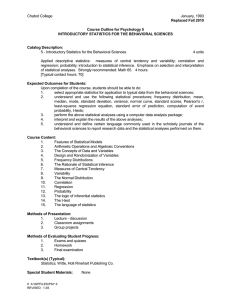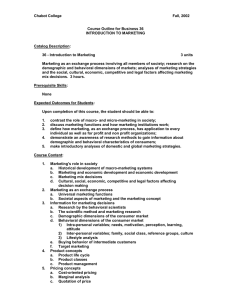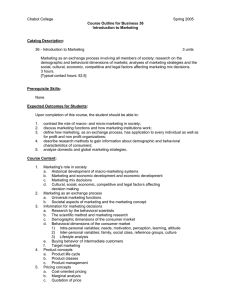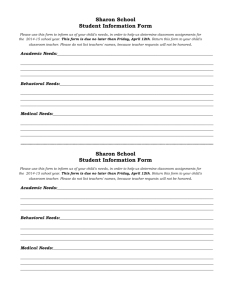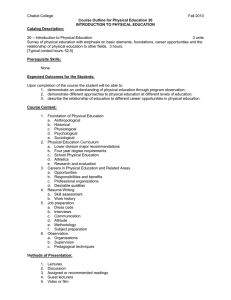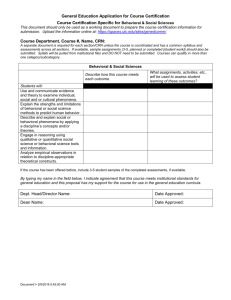Chabot College Fall 2010 Course Outline for Psychology 5
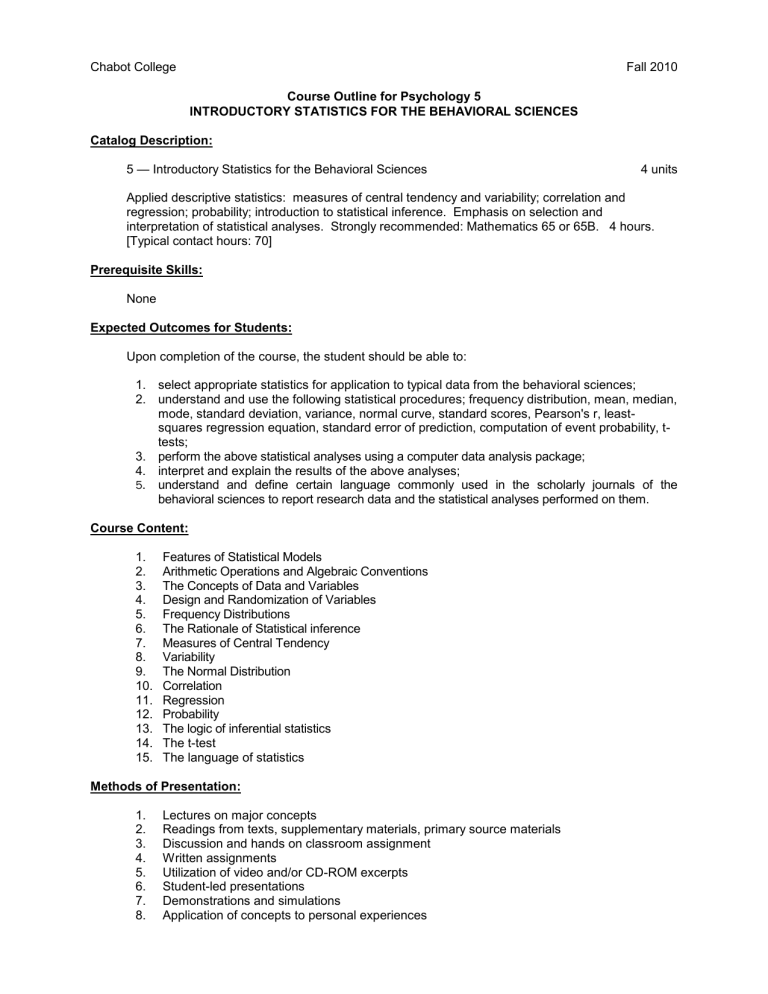
Chabot College
Course Outline for Psychology 5
INTRODUCTORY STATISTICS FOR THE BEHAVIORAL SCIENCES
Catalog Description:
Fall 2010
5 — Introductory Statistics for the Behavioral Sciences
Applied descriptive statistics: measures of central tendency and variability; correlation and
4 units regression; probability; introduction to statistical inference. Emphasis on selection and interpretation of statistical analyses. Strongly recommended: Mathematics 65 or 65B. 4 hours.
[Typical contact hours: 70]
Prerequisite Skills:
None
Expected Outcomes for Students:
Upon completion of the course, the student should be able to:
1. select appropriate statistics for application to typical data from the behavioral sciences;
2. understand and use the following statistical procedures; frequency distribution, mean, median, mode, standard deviation, variance, normal curve, standard scores, Pearson's r, leastsquares regression equation, standard error of prediction, computation of event probability, ttests;
3. perform the above statistical analyses using a computer data analysis package;
4. interpret and explain the results of the above analyses;
5.
understand and define certain language commonly used in the scholarly journals of the behavioral sciences to report research data and the statistical analyses performed on them.
Course Content:
1. Features of Statistical Models
2. Arithmetic Operations and Algebraic Conventions
3. The Concepts of Data and Variables
4. Design and Randomization of Variables
5. Frequency Distributions
6. The Rationale of Statistical inference
7. Measures of Central Tendency
8. Variability
9. The Normal Distribution
10. Correlation
11. Regression
12. Probability
13. The logic of inferential statistics
14. The t-test
15. The language of statistics
Methods of Presentation:
1. Lectures on major concepts
2. Readings from texts, supplementary materials, primary source materials
3. Discussion and hands on classroom assignment
4. Written assignments
5. Utilization of video and/or CD-ROM excerpts
6. Student-led presentations
7. Demonstrations and simulations
8. Application of concepts to personal experiences
Chabot College
Course Outline for Psychology 5, Page 2Fall 2010
Assignments and Methods of Evaluating Student Progress:
1. Typical Assignments: a. Reading and Discussion:
1) Read Chapter 1 , “Picturing Distributions with Graphs,” Moore, pp. 3-21. Be prepared to compare and contrast statistical properties and practice plotting different distribution graphs. b. Writing:
1) Solve the assigned statistical questions and write an interpretative paragraph for each, include the study hypothesis, design, and detailed discussion of the results.
Write the results as they would appear in an APA style paper. c. Collaborative Learning
1) Working as a small group, select a topic of research interest, propose null and alternative hypotheses, choose a study design, collect sample data, and plan out appropriate statistical analysis for the study. Each group presents completed project to the class.
2. Methods of Evaluating Student Progress: a. Examinations and quizzes b. Homework c. One final examination d. Presentation or project
Textbook(s) (Typical):
The Basic Practice of Statistics , Moore, David S., W.H. Freeman and Company, New York, 2010,
5 th edition.
Statistics for the Behavioral Sciences , Nolan, Susan A., Thomas, Heinzen E., Worth Publisher, New
York, 2008, 2 nd edition.
Special Student Materials:
Computer access
PSY 5, revised 9/09: cs
